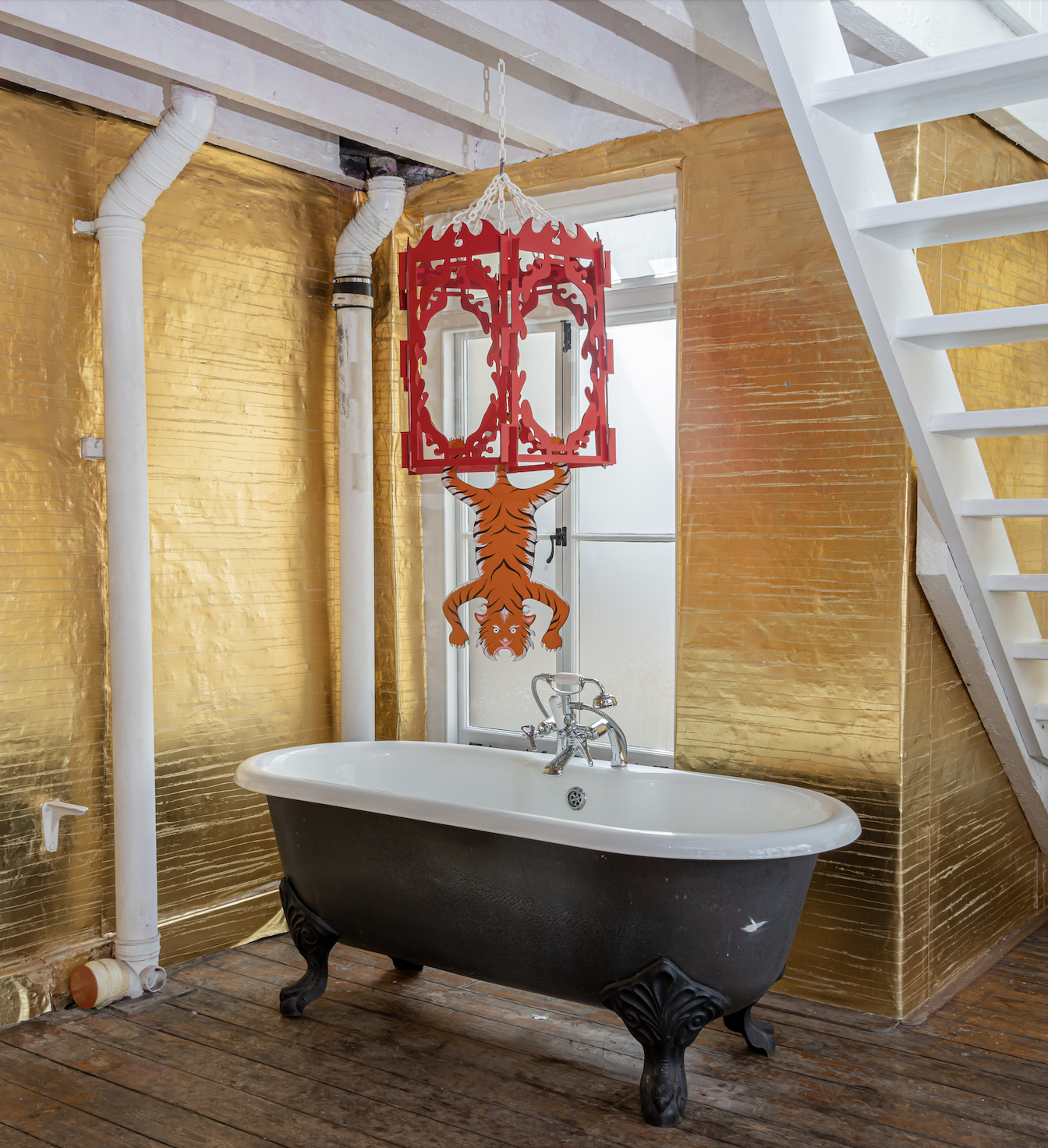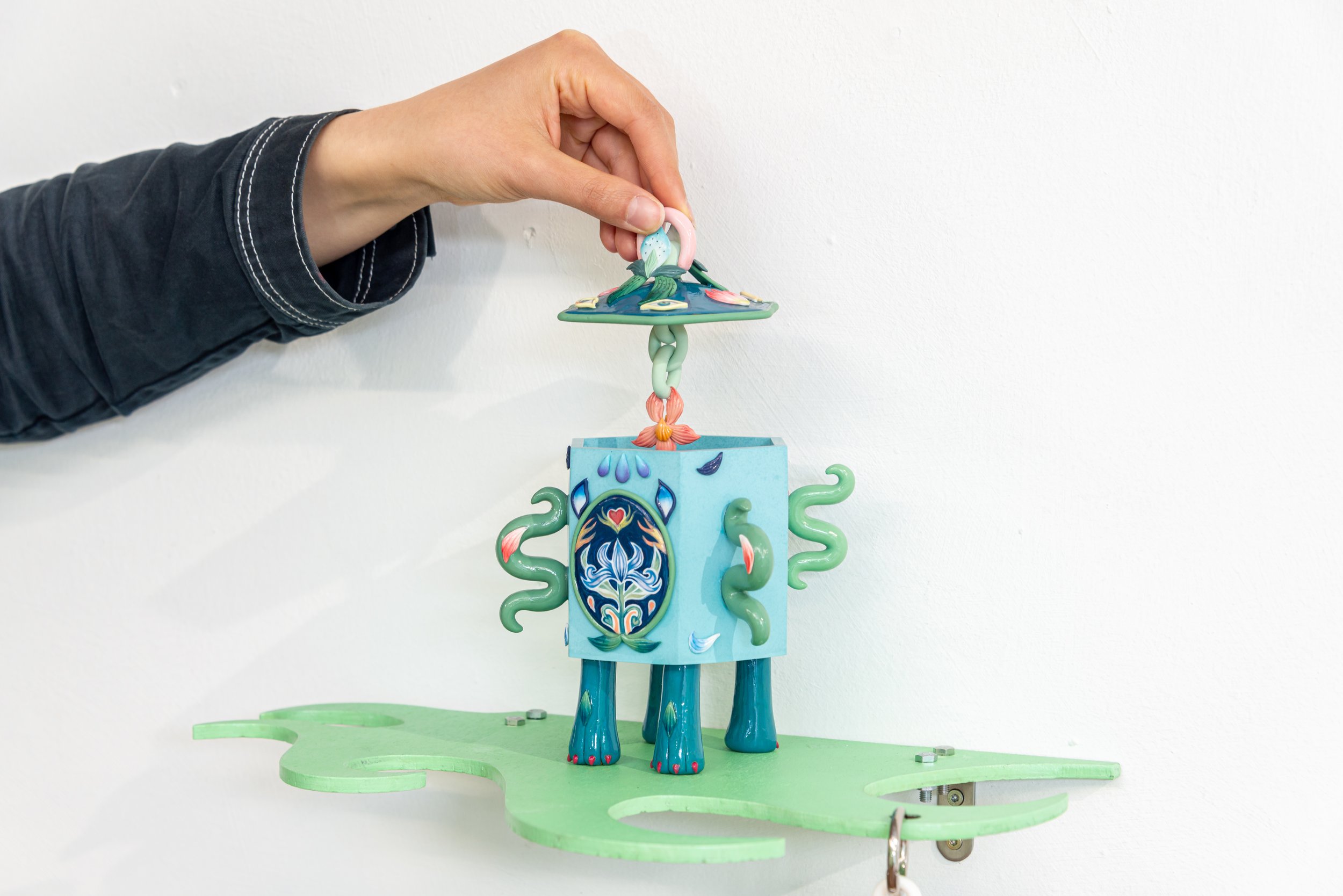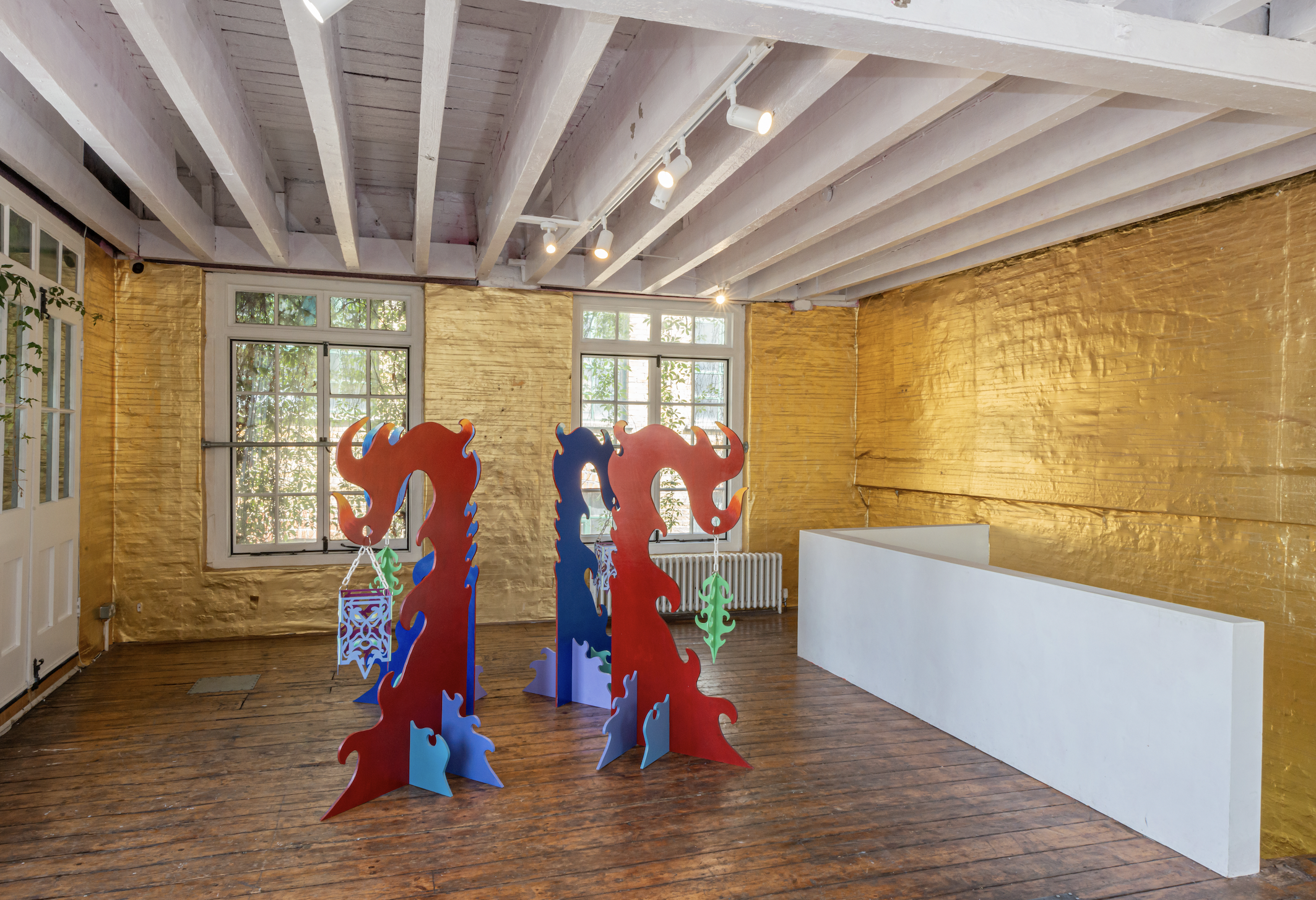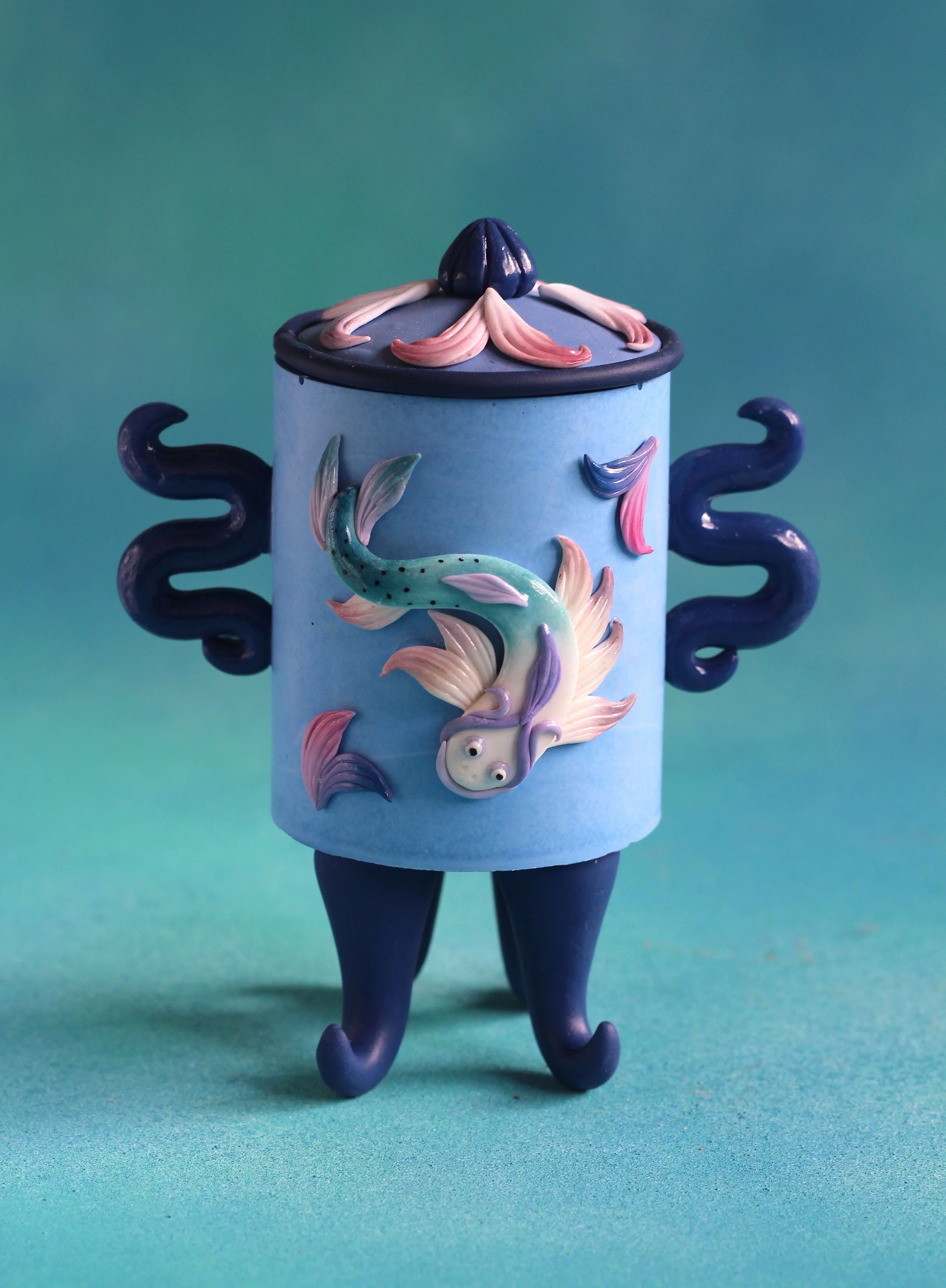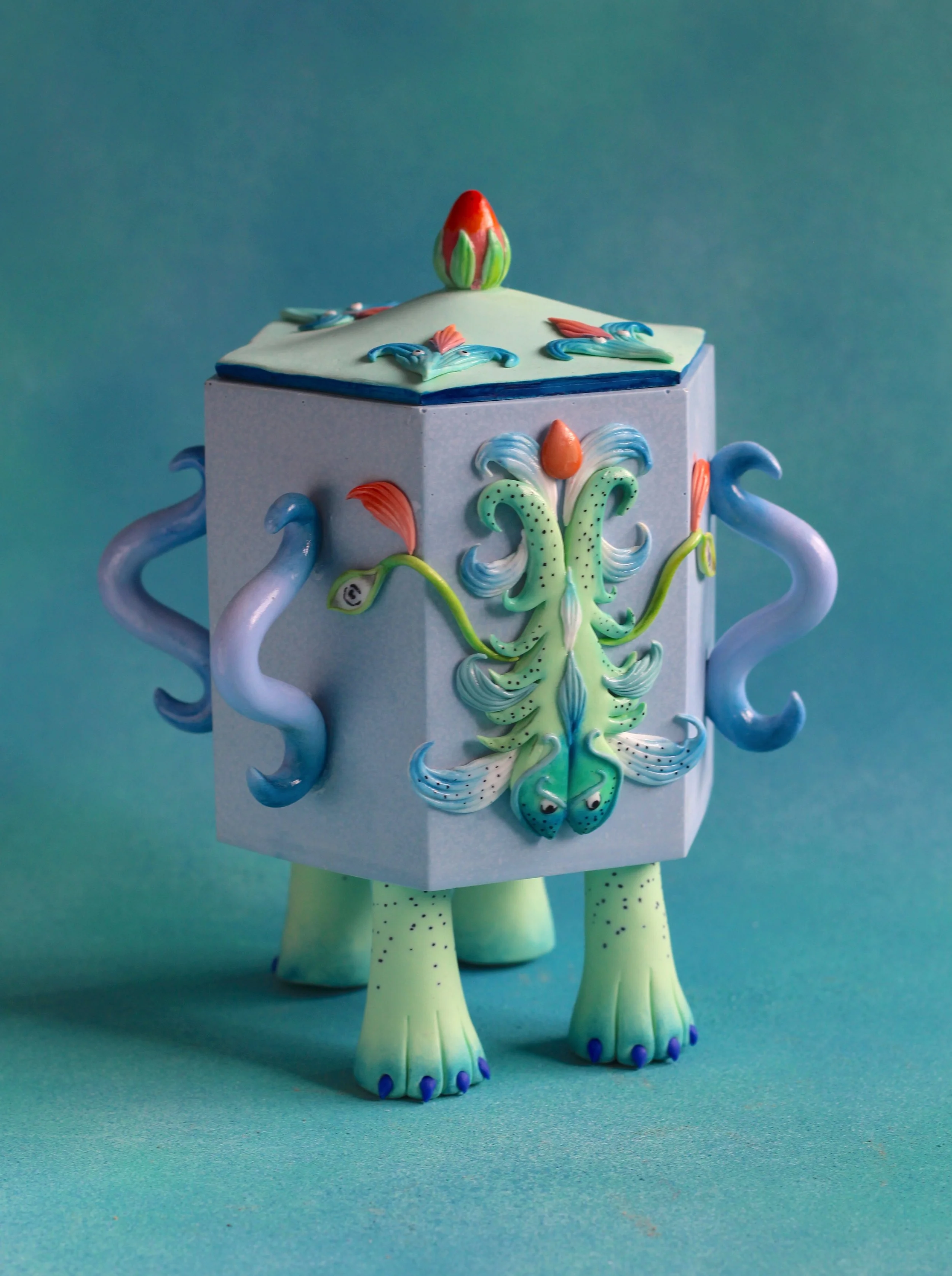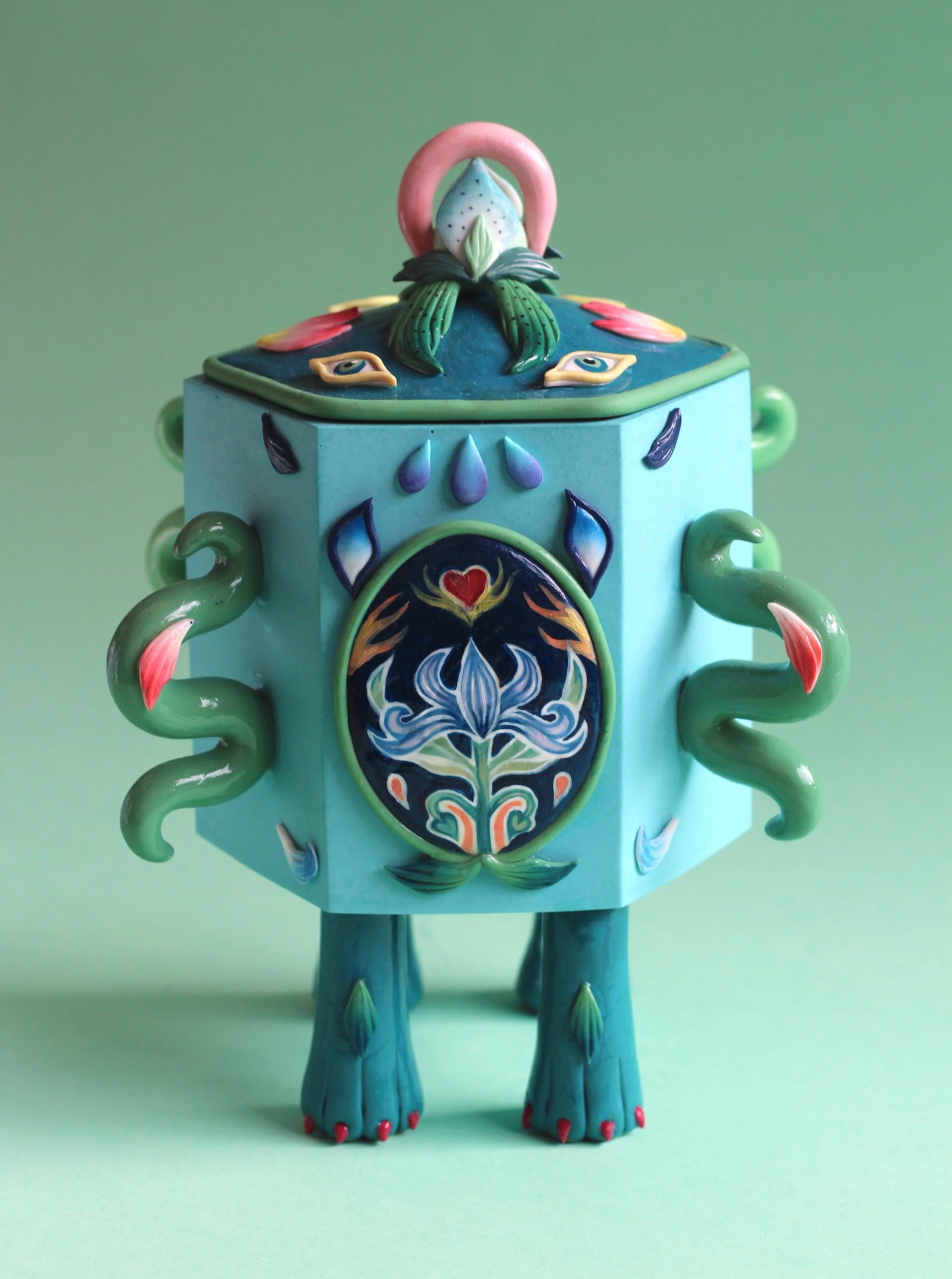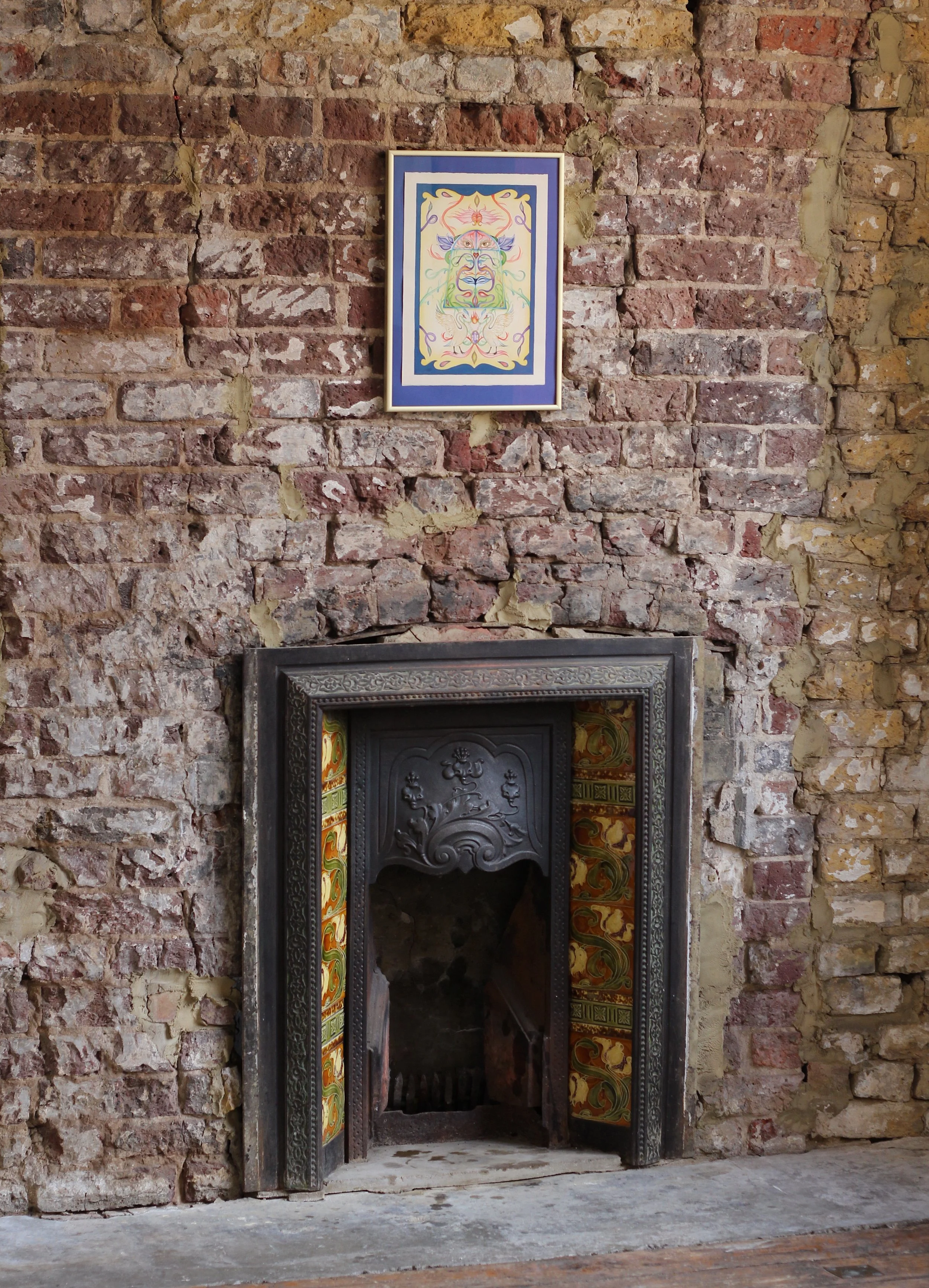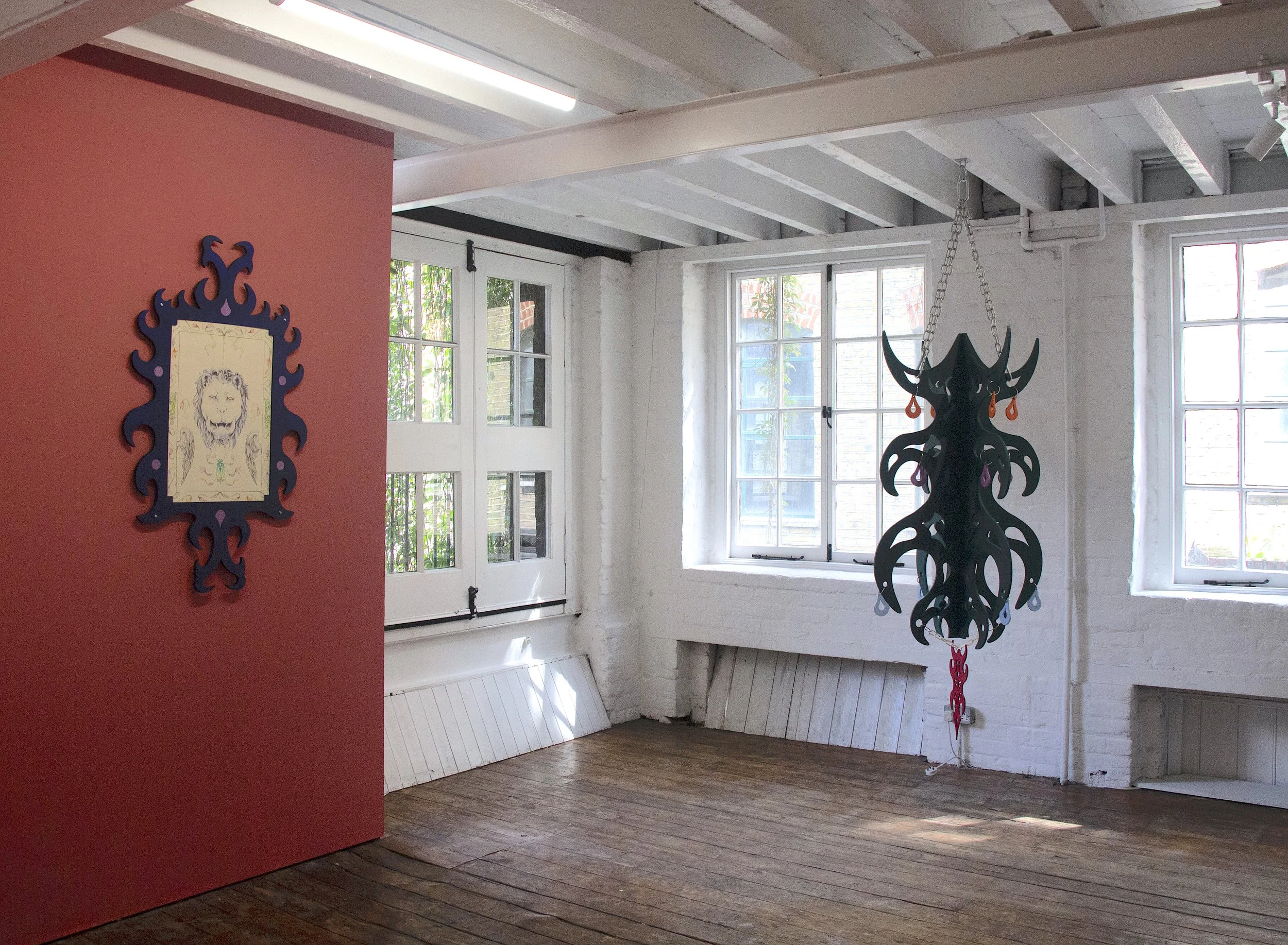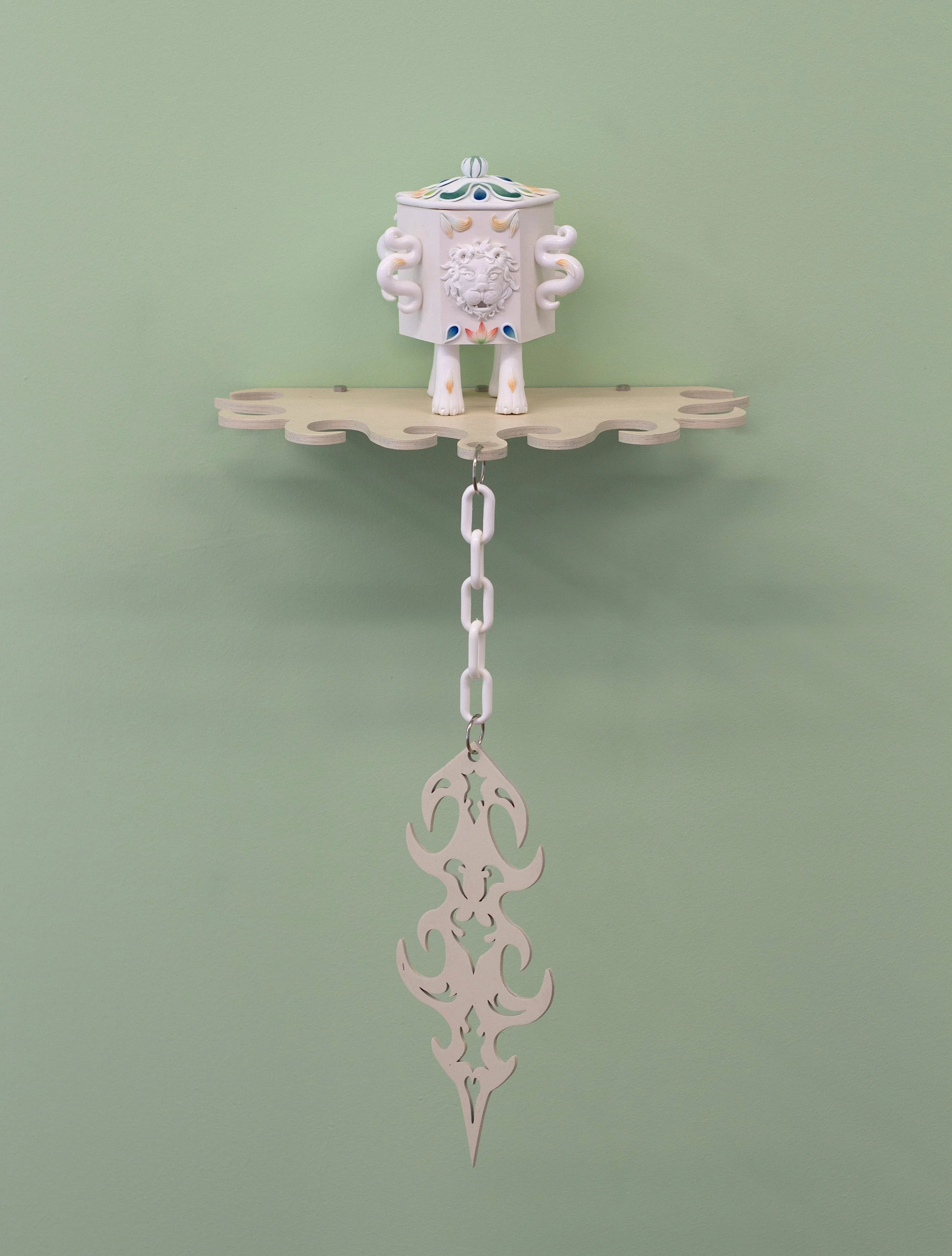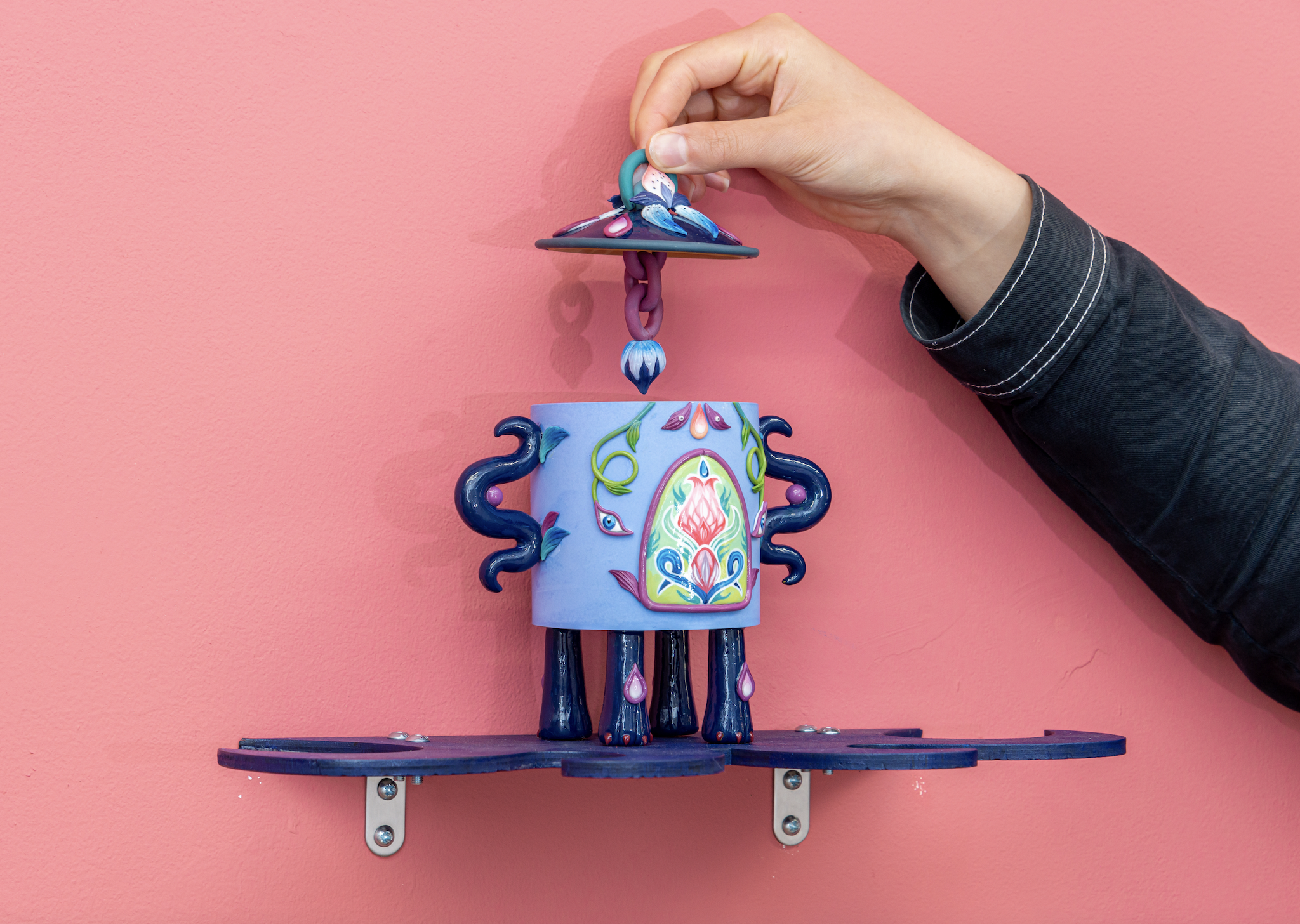
‘Shards of Fire’ relates to the large-scale sculptural works that started this journey of personal and cultural exploration that has shaped my practice over the last 4 years. I’d had this desire to use my practice as a way to connect and explore my mixed Chinese-Singaporean and British heritage and became captivated and intrigued by the 18th-century design style Chinoiserie. Whilst I was intrigued by the exuberant, ornamental and fantastical nature of Chinoiserie I was also aware of its colonial history and its similarities to modern-day cultural appropriation. I wanted to reimagine Chinoiserie in a more appropriate way, using the practice as a means to explore and reflect upon my own mixed cultural identity, whilst cherishing its extravagance and vibrance. From this began a series of large-scale furniture-like sculptures inspired by the creaturely and iconographic aesthetic of Chinoiserie. These sculptures were both functional and ornamental in their design and appearance.
This particular interest in ornament has shaped and remained present in more recent elements of my practice. Captivated by the ornate and intricate snuff bottles that I would often find in the East Asian sections of many British Museums, I started to create my own versions. My snuff bottle-like works are far larger than the traditional designs, often anthropomorphised with arms and legs, and most notably, they don’t contain snuff. Initially, these works were inspired by objects that were emblems of my heritage, more recently they’ve come to reflect my research into a series of Classical Chinese texts, including ‘The Classics of Mountains and Seas’; an ancient Chinese mythological-geographical anthology and Pu Songling’s ‘Tales of a Chinese Studio’. I’ve been using the enchanted objects, creatures and landscapes within these texts as inspiration for my most recent series of snuff bottles, further merging elements from Medieval bestiaries and mythology to form my own process of sculptural storytelling.
Most recently I’ve begun to consider the relationship between ornament and Orientalism. I was introduced to ‘Ornamentalism’, a feminist theory for East/South East Asian personhood developed by Anne Annlin Cheng. Cheng’s Ornamentalism explores the ‘representation and ontology of Asian feminity', utilising the term Ornamentalism in place of Orientalism, to reflect the way in which ‘Asian feminity’ has historically been defined by its association with ornamental aesthetics; ‘silk, ceramics and other sorts of animated object-ness’. I wanted to examine how Cheng’s understanding of Asian feminism and its association with ornamental materiality and language might affect how I understood my work as a reflection of myself. What do the ornamental aesthetics of my practice and the ornamental language I use to describe it, suggest about my sense of identity as a British-Chinese woman? By researching and reworking the distinctly ornamental and decorative designs of Chinoiserie I’ve been able to reflect on my use of ornamentation and how I have viewed it conversely as means to reclaim and reconnect with my British-Chinese cultural identity. For me, the over - ‘ornamentalisation’ or flamboyance of my work has become a way of pushing against fixed notions of identity and race that are often a point of confusion and struggle for those who come from mixed cultural backgrounds.
